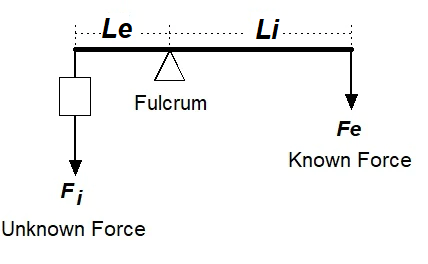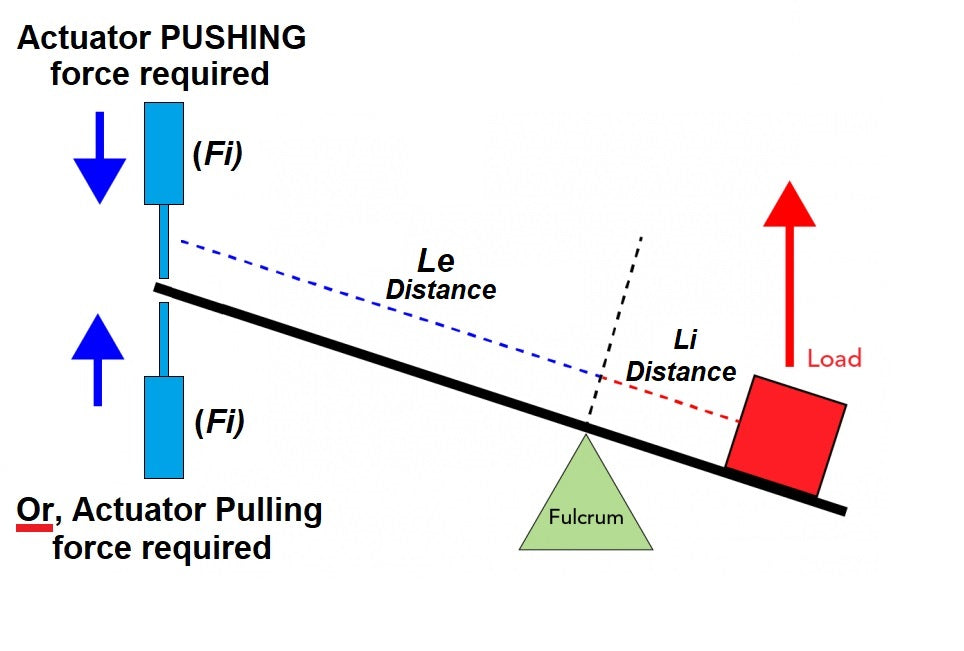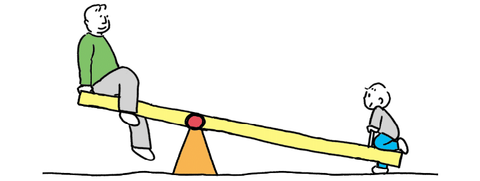What is a First Class Lever, and how do you calculate one
Try our Calculator below

A first-class lever is a simple machine that consists of a rigid bar that pivots around a fixed point called the fulcrum. In a first-class lever, the fulcrum is located between the effort force and the load force.
The effort force is the force applied to the lever to lift or move an object, while the load force is the force exerted by the object being lifted or moved. The distances from the effort force and load force to the fulcrum are called the effort arm and load arm, respectively.
First-class levers are used to amplify force, change the direction of force, or increase the speed of movement. Examples of first-class levers include seesaws, crowbars, and scissors.
In a first-class lever, the principle of moments or torque applies, which can be expressed mathematically as:
Effort force (Fe) × Effort arm (Le) = Load force (Fl) × Load arm (Ll)
This equation demonstrates the relationship between the forces and distances involved in a first-class lever, allowing you to calculate the necessary effort force or load force when the other variables are known.
The first-class lever is the most common type of lever, and it is used in a variety of applications, including:
- Opening doors and windows
- Lifting objects
- Magnifying forces
- Changing the direction of force
- Moving objects
First-Class Lever Force Calculator
Results
Actuator Force Required Fe:
0 lbs
0 N
0 kg
0 g
A different version of a 1st class lever calculator can be found here, that uses a graphical interface to make the calculator clearer.
Click hereThe resistance force is calculated using the following equation:
F_r = F_l / r
where:
F_r = resistance force
F_l = load force
r = distance between the fulcrum and the load
In pounds, the resistance force would be:
F_r = (F_l / r) * 2.20462262185473

The most common type of real world application of a First class lever is in a playground Sea saw, otherwise known as a teeter-totter. A pivot (fulcrum) is always in the middle with 2 weights either side to make it even so that it can be ridden up and down with ease. When one person is heavier than the other, then the lighter person has to sit further away from the fulcrum or pivot, and the heavier person has to sit closer to the pivot to make it balance.

Now what about 2nd class levers, or 3rd class levers? We have created some blog posts on other classes of levers, shortcuts to these are shown below:
1st class lever calculator
2nd class lever calculator
3rd Class lever calculator

